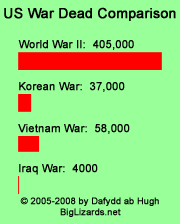November 25, 2005
What's Flu With You?
Recently we have been hearing about this mysterious Bird Flu from Southeast Asia. Some prophets of doom say it has already spread to epidemic proportions in China, and that it will soon spread across the globe. Dire predictions warn of a worse pandemic than the Spanish Flu of 1918, which killed an estimated 50 million people worldwide.
But science reporter Michael Fumento challenges the conventional wisdom. “As of November 9, 125 cases and 64 deaths have been reported from avian flu since late 2003," Fumento writes; "all in Indonesia, Thailand, Vietnam, and Cambodia." So far, at least, the Avian Flu is a bust in the pandemic sweepstakes.
Scientists have determined that, like the 1918 flu, the virus in the current Bird Flu does jump from birds to humans. But what has not yet been seen is a single case where the new H5N1 influenza virus was transmitted from human to human... which was what made the World War I Spanish Flu so deadly. H5N1 (H5, for short) is very different from the Spanish Flu.
Sir John Skehel, a lead researcher of the National Institute for Medical Research team, which studied the 1918 strain in great detail, told BBC News Online:
"[O]ur research will not have an immediate impact on the situation currently unfolding in the Far East with the chicken flu known as H5, since, from our previous work, we know that the 1918 and the H5 Hemagglutinins are quite different."
I believe that the reason all reported cases of H5 in humans come from rural Asian communities is that in those places, birds ranchers practically live with the birds. Bloody, dripping birds are routinely sold in the street without any kind of refrigeration or sanitation. I remember a number of years ago, many Japanese restaurants had dead ducks, feathers and all, dangling from hooks on the outside walls. But in developed countries like the United States, we raise, slaughter, and store poultry quite differently (freezers are a wonderful invention); these sanitary procedures help prevent bird-to-human infection. So from what I've read, I believe that unless the virus mutates to transmit human-to-human, H5 will not cause a pandemic in the developed world.
That is not to say that H5 won't suddenly mutate, as the Spanish Flu did. So, what is wrong with warning the population? Shouldn't we err on the side of caution? There is plenty wrong, Fumento says.
What we can say with confidence is that there is never such a thing as helpful hysteria. And the line between informing the public and starting a panic is being crossed every day now by politicians, public health officials, and journalists.
Headlines like "Flu Pandemic Could Kill 150 Million, U.N. Warns" (Reuters) certainly haven't helped. Never mind that the figure was tossed off by a single official who provided a range of "5 million to 150 million." (Translation: "We haven't the foggiest.") Similarly, the media have generally morphed the federal government's estimate of 200,000 to 1.9 million deaths to simply "1.9 million deaths." Also not helping is the media propensity to seek out the most alarmist "experts." [Emphasis added here and below]
But, how likely is it that a mutated virus will start to infect the human population? Fumento again:
There are no pat formulas, such as the chances of shooting snake eyes or drawing a royal flush. Nor is it just a matter of time. Indeed, one of the arguments against a human outbreak of H5N1 is that sick birds have been mixing with humans for years now without producing a pandemic.
It's practically a state secret that the discovery of H5N1 in poultry dates back not to 1997 but rather to 1959, when it was identified in Scottish chickens. Perhaps haggis had a protective effect on the farmers, but there was a terrible outbreak of the related H5N2 among both chickens and turkeys in Pennsylvania in 1983-85 (17 million birds were destroyed) that appears to have originated as H5N1 in seagulls. So H5N1 has been flying around the globe for over four decades and hasn't done a number on us yet. That doesn't mean it won't ever; but there's absolutely no reason to think it will pick this year or next.
However, just because it hasn’t happened yet doesn't mean it never will. This is hardly reassuring. Can’t we do something to help prevent a repeat of 1918?
The simplest prophylactic action would be to vaccinate all domestic birds. But considering the vast numbers of the bird population and the difficulty catching them to give them shots, it's highly doubtful this could be done. A more practical program is to minimize the contacts between birds and humans.
- Developing countries should adopt the procedures used by developed countries to raise domesticated poultry.
But what about mutations? If the flu mutates into a human-to-human infection, that will spread much faster than Bird Flu spreads today; most people have no contact with potentially infected birds... but everybody has contact with other humans.
In fact there is something we can do to minimize the possibility of mutation. There are two ways that the virus can mutate. The first is simply by random chance; but this is unlikely to produce a particular mutation -- human-to-human contagion, in this case.
But the other route to mutation is by contact with another strain of the virus. If a human who is already infected with any other human flu that spreads by human-to-human contact also contracts the H5N1, the two viruses can merge and form a completely different, so-called hybrid flu. The hybrid can combine the symptoms of H5 with the human-to-human contagion of the other flu.
- So to avoid hybrid flu, vaccinate as many humans as possible. We can do this without getting into a panic mode.
We can also minimize the spread of flu, even if a mutation occurs and H5 actually starts to transmit between humans. It makes perfect sense to take the same precautions we already take for any other flu.
- If you contract the flu, take medication that “reduces the duration and severity of acute human influenza” and stay in bed, away from other people.
As Michael Fumento notes,
Both Tamiflu and Relenza should be taken as soon as flu symptoms become evident, preferably within two days, although at least one animal study showed Tamiflu was still helpful long after what's normally considered the "window of opportunity." It's also okay to take them if it's known that avian flu is truly on the wing.
Of course if the flu is as lethal as they say it is (some claim a 50% mortality rate), none of these measures would be enough. But is it? Fumento argues that the lethality of this flu is exaggerated:
We do know, however, that there are millions of Asian farmers in constant contact with the saliva and feces of countless birds where the virus has been prevalent. Indeed, blood samples collected from rural Chinese in 1992 indicate that millions had already been infected with H5N1, yet there was no reported outbreak of human disease. An analysis was also conducted after an H7N7 avian flu outbreak in the Netherlands two years ago. It found infections among half of persons who either had contact with the birds or were family members. Were something like that rate to hold true for Southeast Asia, H5N1's mortality rate among infected humans would turn out to be no higher than for human flu.
The 50% lethality rate assumes that the 125 known cases are the only ones that have actually occurred; 64 deaths divided by 125 cases equals 51.2% mortality. But what if there have been hundreds or even thousands of other infections -- and the victims simply got over it? How would we know that they had H5, rather than a normal flu? Typically, doctors only know a person has Avian Flu if he is admitted to a hospital or other health-care center; but that would only happen if the infection became very dire indeed (rural farmers in the Third World don't go to hospital unless they're very, very sick for a very long time). So the H5 infections we hear about are exactly those that are so severe that death is not surprising. We would never hear about the milder cases.
But we always come back to the Spanish Flu. It did kill about 50 million people. How can Fumento be so confident that will not happen again? We have more people in the world. We have better and faster transportation (which spreads the disease quicker). If H5 spreads anything like the Spanish Flu did, the result would be much worse today. Or would it?
Odds are that the Spanish Flu would not have become a pandemic if it happened today. In 1918, the world was in the midst of WWI. Millions of young people from all over the world, many from rural areas with very little immunity to urban disease, gathered into congested military bases, then were shipped to faraway countries. You can almost track the epidemic in lockstep with the movements of American and English troops. Soldiers were stuck in trenches without adequate access to medical treatment and in daily intimate contact with all the other soldiers... a laboratory-perfect prescription for spreading disease. But none of these conditions exists now.
Avian Flu or any other kind of flu should not be treated lightly. But we have means to deal with this disease. Running around like “infected” chickens with their heads cut off is not one of them.
Hatched by Sachi on this day, November 25, 2005, at the time of 2:34 AM
Trackback Pings
TrackBack URL for this hissing: http://biglizards.net/mt3.36/earendiltrack.cgi/259
Listed below are links to weblogs that reference What's Flu With You?:
» While You Were Shoveling... from Big Lizards
...partially oxidized domesticated fowl into your maws.... For those of you who decided, funnily enough, to focus on "family," "friends," and "football" this holiday weekend, rather than do the manly thing and read your favorite blogs right there at th... [Read More]
Tracked on November 28, 2005 3:20 AM
Comments
The following hissed in response by: ShrinkWrapped
There is a fine line we have to walk between apathy and panic and democracies have a particularly difficult time staying close to that line. If we are apathetic about the bird flu, our legislators and executice branch will find other, more pressing ways in which to spend money; if we are induced to panic, way too much money will be thrown at the problem than can be absorbed and used in any useful way. However, I think the risk of apathy far outweighs the risk of panic. There are 3 scenarios to be concerned about, in ascending level of threat: 1. At some point, either the avian flu will mutate, or recombine, into a deadly strain that facilitates P2P transmission, and while the US will be hit hard economically and could lose many people, those areas which have more primitive health care systems will be devastated. That is actually not the biggest reason to encourage the panic that causes money to flow into public health and research. 2. The bigger danger is of some novel virus or bacteria finding its way into the human population (consider ebola "learning" how to cause air-borne infections; parts of Africa, a repository of exotic infectious agents and a culture of immunocompromised humans is ideal for facilitating such emergence). 3. And the biggest danger is of a bio-terrorist designing a bacteria or virus that is lethal and easliy communicated (splice a gene to produce tetrodotoxin into e. coli for example, or the gene for tetanus into a rhinovirus). If we over spend in response to an unecessary panic, we will still have set up a system better equipped to deal with such threats and it will make us all a great deal safer when a real disaster hits. Between SARS and Avian Flu, the public health people have been doing real world tests of their resources and abilities and they will be much better prepared for when we really need them.
The above hissed in response by: ShrinkWrapped ![[TypeKey Profile Page]](http://biglizards.net/blog/nav-commenters.gif) at November 26, 2005 7:36 AM
at November 26, 2005 7:36 AM
Post a comment
Thanks for hissing in, . Now you can slither in with a comment, o wise. (sign out)
(If you haven't hissed a comment here before, you may need to be approved by the site owner before your comment will appear. Until then, it won't appear on the entry. Hang loose; don't shed your skin!)© 2005-2009 by Dafydd ab Hugh - All Rights Reserved













